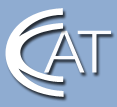Explore high-paying careers in clean, high-tech Connecticut manufacturing.

Educators: Externships
Work-based Learning Projects for the Classroom
Project: How Engineers Help Scientists
Name of NGM Educator: Catherine Seaver, Engineering Professor, Manchester Community College |
Name of Host Company: University of Connecticut Photonics Research Lab |
Grade Level: Freshman-Sophomore college students |
Student Work Types:
|
Task Abstract: The idea of combining research in science, specifically physics, with engineering should be first presented by the teacher by providing a definition of what science is and engineering is. Students should be involved in a discussion of examples of science vs. engineering. It may also be valuable to show a video or DVD related to a field of research in physics, such as photonics, and point out the need to have new equipment or machinery developed in order to complete the research and experimentation. A discussion should follow where students offer new developments in science and physics then suggest how engineering may have been involved.
|
Task Objectives: The goal of this task is to demonstrate how different types of engineers are needed to support scientists in their research and development. The task should incorporate discussions, written assignments and the development of visual |
Esssential Understandings/Questions: At the end of these tasks, the students should clearly understand the difference between science and engineering. Students should also be able to discuss how engineers support the research and experimentation done by scientists. |
Task Description: In this task,students will write an essay describing an area of research in a science which they are interested in. They should next discuss how engineers would be involved in the research and experimentation. They should identify what kinds of engineers are involved and speculate on exactly the type of work they would have done. Students should identify particular challenges the engineers might have faced and make suggestions as to how they would have like to have participated in the experimentation and research. In this task, students work in small groups of two or three students to select either a company or a technology which involved both new developments in science and engineering. Each group should create a PowerPoint presentation with at least 10 slides to describe their selected topic. The groups should also create at least one other visual aid such as an example of the topic, a skit, or an activity for the class to complete which would support their project. Each group will give their presentation to the class and end their presentation by posing a question to the class to initiate a discussion on their topic. |
Resources Required:
|
Prior Learning Required: None |
Educator Comments: I think that one of the best parts of this curriculum project is that it might help to dispel some of the stereotypes that students have as to what engineers do. There are many different fields of engineering that many students do not know exist and the primary goal here is to broaden the students scope of what engineers do so they might find a specific area that interests them. |





